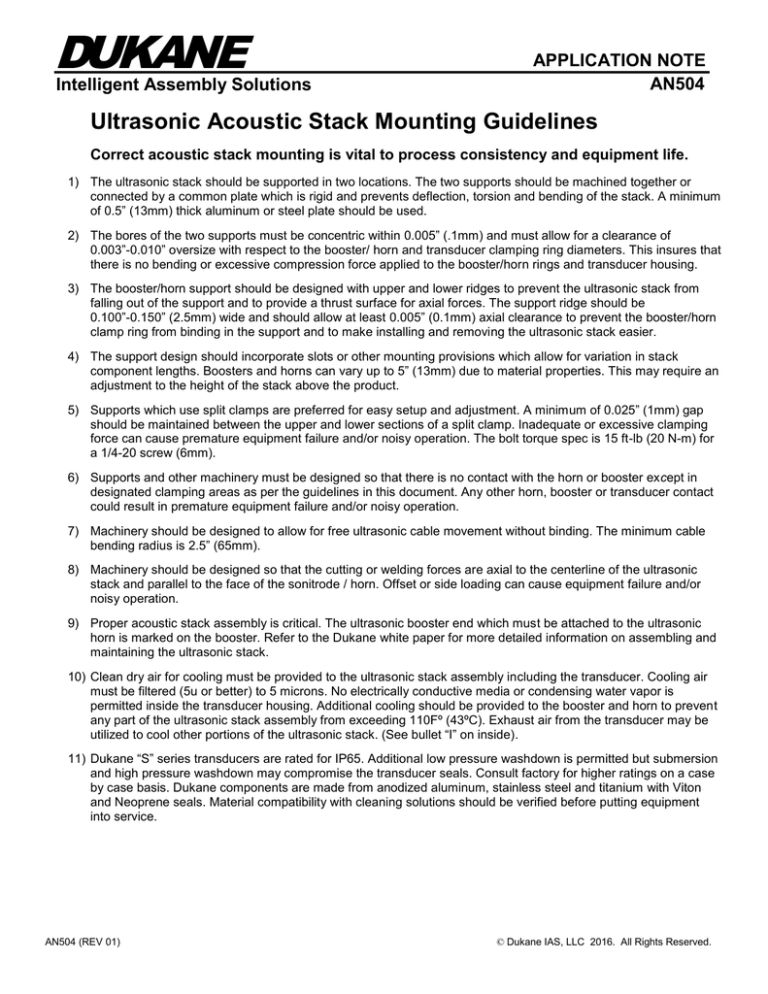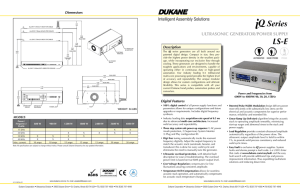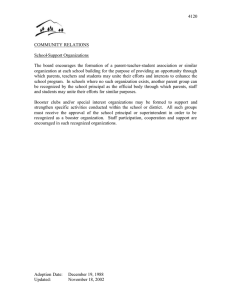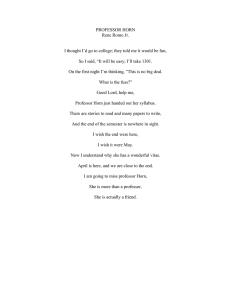
DUKANE
Intelligent Assembly Solutions
APPLICATION NOTE
AN504
Ultrasonic Acoustic Stack Mounting Guidelines
Correct acoustic stack mounting is vital to process consistency and equipment life.
1) The ultrasonic stack should be supported in two locations. The two supports should be machined together or
connected by a common plate which is rigid and prevents deflection, torsion and bending of the stack. A minimum
of 0.5” (13mm) thick aluminum or steel plate should be used.
2) The bores of the two supports must be concentric within 0.005” (.1mm) and must allow for a clearance of
0.003”-0.010” oversize with respect to the booster/ horn and transducer clamping ring diameters. This insures that
there is no bending or excessive compression force applied to the booster/horn rings and transducer housing.
3) The booster/horn support should be designed with upper and lower ridges to prevent the ultrasonic stack from
falling out of the support and to provide a thrust surface for axial forces. The support ridge should be
0.100”-0.150” (2.5mm) wide and should allow at least 0.005” (0.1mm) axial clearance to prevent the booster/horn
clamp ring from binding in the support and to make installing and removing the ultrasonic stack easier.
4) The support design should incorporate slots or other mounting provisions which allow for variation in stack
component lengths. Boosters and horns can vary up to 5” (13mm) due to material properties. This may require an
adjustment to the height of the stack above the product.
5) Supports which use split clamps are preferred for easy setup and adjustment. A minimum of 0.025” (1mm) gap
should be maintained between the upper and lower sections of a split clamp. Inadequate or excessive clamping
force can cause premature equipment failure and/or noisy operation. The bolt torque spec is 15 ft-lb (20 N-m) for
a 1/4-20 screw (6mm).
6) Supports and other machinery must be designed so that there is no contact with the horn or booster except in
designated clamping areas as per the guidelines in this document. Any other horn, booster or transducer contact
could result in premature equipment failure and/or noisy operation.
7) Machinery should be designed to allow for free ultrasonic cable movement without binding. The minimum cable
bending radius is 2.5” (65mm).
8) Machinery should be designed so that the cutting or welding forces are axial to the centerline of the ultrasonic
stack and parallel to the face of the sonitrode / horn. Offset or side loading can cause equipment failure and/or
noisy operation.
9) Proper acoustic stack assembly is critical. The ultrasonic booster end which must be attached to the ultrasonic
horn is marked on the booster. Refer to the Dukane white paper for more detailed information on assembling and
maintaining the ultrasonic stack.
10) Clean dry air for cooling must be provided to the ultrasonic stack assembly including the transducer. Cooling air
must be filtered (5u or better) to 5 microns. No electrically conductive media or condensing water vapor is
permitted inside the transducer housing. Additional cooling should be provided to the booster and horn to prevent
any part of the ultrasonic stack assembly from exceeding 110Fº (43ºC). Exhaust air from the transducer may be
utilized to cool other portions of the ultrasonic stack. (See bullet “I” on inside).
11) Dukane “S” series transducers are rated for IP65. Additional low pressure washdown is permitted but submersion
and high pressure washdown may compromise the transducer seals. Consult factory for higher ratings on a case
by case basis. Dukane components are made from anodized aluminum, stainless steel and titanium with Viton
and Neoprene seals. Material compatibility with cleaning solutions should be verified before putting equipment
into service.
AN504 (REV 01)
© Dukane IAS, LLC 2016. All Rights Reserved.
DUKANE
Intelligent Assembly Solutions
APPLICATION NOTE
AN504
Dukane Open Probe Mount EX-8331-00
A. Common mounting plate to ensure concentricity between
converter, booster and horn flat +/- 0.0005” (0.013mm).
B. Slotted mounting holes on common back plate to
accommodate changes in horn and booster lengths.
C. Mount designed with undercuts to take up load from
process on booster clamp ring surfaces.
G. Air cooling input, sufficient to prevent acoustic stack
(horn/sonotrode, booster, converter) from exceeding
110ºF (43ºC ). (Application/process dependent)
H. Cable placement to eliminate strain or sharp bends.
I. Exhaust air may be plumbed to provide additional cooling to
converter output end and horn (See Figure A, Page 4.)
D. No deflection permitted. Mount should prevent stress and
deflection on booster converter interface due to
misalignment.
J. Nothing to come in contact with transducer output, booster
body or sonotrode/horn. Do not attach to, or modify these
components.
E. Mount must maintain correct bore tolerances for booster
clamp ring and probe. + 0.005” – 0.000”
(0.127mm -0 .000mm). Bores to be concentric.
+ /- 0.005” (0.127mm).
K. Ensure proper orientation of booster, output end to
sonotrode/horn.
L. Load to be centered and parallel to face of sonitrode/horn.
Minimize side load of acoustic stack.
F. Inadequate or excessive clamping force on the these
components can cause premature equipment and process
failures. Bolt clamp torque specification is 15 lb.ft (20 Nm)
4 places.
Proper acoustic stack assembly is critical.
Please see: Ultrasonic Probes/Stacks Understanding and caring for the heart of
your ultrasonic system at
http://www.dukane.com/us/SE_Stackarticle.htm
AN504 (REV 01)
© Dukane IAS, LLC 2016. All Rights Reserved.
DUKANE
Intelligent Assembly Solutions
APPLICATION NOTE
AN504
Dukane Open Probe Mount EX-8331-00
AN504 (REV 01)
© Dukane IAS, LLC 2016. All Rights Reserved.
DUKANE
Intelligent Assembly Solutions
APPLICATION NOTE
AN504
Ultrasonic Acoustic Stack Mounting Drawings
EX-8331-00 standard probe mounts shown with
Dukane 41S30 sealed 20 kHz stainless steel
IP65 rated converter and titanium booster
AN504 (REV 01)
© Dukane IAS, LLC 2016. All Rights Reserved.
DUKANE
Intelligent Assembly Solutions
APPLICATION NOTE
AN504
Troubleshooting Tips
Problem - excess noise or system overload.
1. Ensure proper cooling is in place.
2. Inspect complete acoustic stack for over temperature. Components that have experienced excessive heat may be
permanently damaged, consult factory before putting units back in production.
3. Remove acoustic stack from mount. Inspect for missing components; inspect for nicks, cracks, scrapes or
evidence of metal to metal contact.
4. Inspect mount to ensure proper clamp torque and tolerances.
5. Disassemble and re-assemble acoustic stack following proper procedures. See, Ultrasonic Probes/Stacks Understanding and caring for the heart of your ultrasonic system white paper.
http://www.dukane.com/us/Documents/DesignGuides/Ultrasonic%20Probes.pdf
6. If problem still exists, contact the manufacturer.
Visit http://www.dukane.com/us/DL_DrawingsLayout.asp for downloadable drawings PDF, DWG, DXF & STP.
20 kHz Standard Mount EX-8331-00
20 kHz Narrow Mount EX-8468-00
30/40 kHz Standard Mount EX-8471-00
15 kHz Standard Mount EX-8470-00
Available in anodized aluminum or stainless steel
Note: All specifications are subject to change without notice. Please consult Dukane IAS, LLC for any updated information.
AN504 (REV 01)
© Dukane IAS, LLC 2016. All Rights Reserved.
DUKANE
Intelligent Assembly Solutions
APPLICATION NOTE
AN504
Dukane IAS, LLC
Intelligent Assembly Solutions
2900 Dukane Drive
St. Charles, IL 60174 USA
Tel: (630) 797-4900
Fax: (630) 797-4949
http://www.dukane.com/us
Disclaimer: Dukane IAS, LLC assumes no responsibility for any errors which may appear in this document, reserves the right to change devices or
specifications detailed herein at any time without notice, and does not make any commitment to update the information contained herein.
AN504 (REV 01)
© Dukane IAS, LLC 2016. All Rights Reserved.
DUKANE
Intelligent Assembly Solutions
APPLICATION NOTE
AN504
DOCUMENT INFO:
DATE: 06/06/2016
ECN:
DRAWN: DSS
CHECKED:
APPROVED:
ENGINEER:
REVISION INFO:
ISS
DESCRIPTION
APPD
DATE
01
Added document/revision page.
ECN 9825
DSS
07/12/2016
AN504 (REV 01)
© Dukane IAS, LLC 2016. All Rights Reserved.




